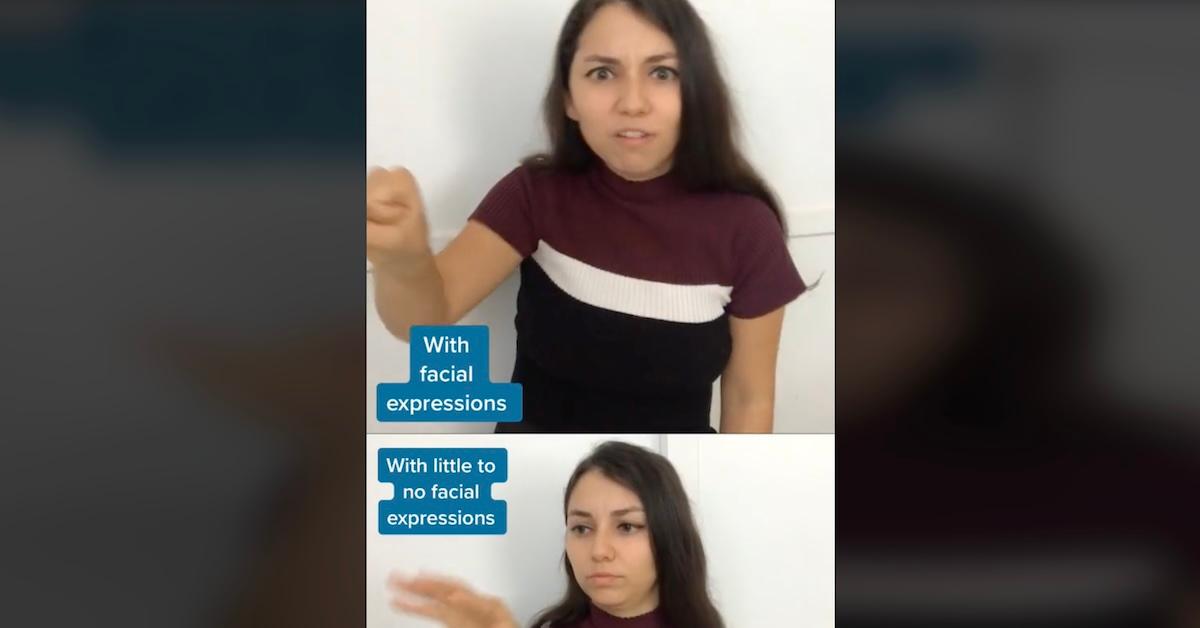Sign Language Interpreters Have Expressive Faces — They Speak With Their Features
Published Oct. 30 2023, 1:39 p.m. ET

The Gist:
- Sign language translators use expressive faces to convey emotions and context, as facial expressions make up a significant portion (70 percent–80 percent) of sign language communication.
- These expressions are essential for deaf individuals to understand the intensity and emotional nuances of the message, similar to how tone and volume are used in spoken language.
- Learning to use facial expressions effectively is crucial for those interested in sign language and helps bridge the gap between the hearing and deaf communities.
Sometimes, the best part of any program or live performance is the sign language translator. For example, comedians sometimes interact with sign language interpreters during stand-up comedy shows to make extra jokes based on the translator’s movements and facial expressions.
Because people from the hearing community don’t use sign language on a daily basis, they naturally don’t understand every aspect of the language. In fact, there are several different sign languages spoken throughout the world, but translators always “make faces” to communicate what they’re saying.

Everyone who speaks sign language fluently makes expressive faces.
People in the hearing community don’t see sign language nearly as much as those in the deaf community. Even still, it can be seen in television, movies, TikTok videos, and more as we work to make the world more accessible, as well as to portray more cultures in media. And every time we see it, the people signing make very expressive faces.
This is because facial expressions are considered 70 percent–80 percent of speaking sign language. Hand movements can only go so far — they can’t communicate how the speaker feels about what they’re saying alone. So it’s imperative to use facial expressions to properly convey the context of whatever they’re saying.
In fact, TikToker @deaftimesthreeandme showed how important eyebrows are in sign language. In her video, she demonstrates how lifting one’s eyebrows shows surprise, furrowing them can show sadness, and curving them can show happiness. On the Explain It Like I’m Five Reddit, someone explained that expressions are part of the grammar of American Sign Language.
“There are specific facial gestures that go with certain signs,” they said. “In addition, placement and directionality of signs in space is important grammatically. But at all times facial expression shows the intensity of the message — similar to tone of voice and volume which has a similar role in speech.”
Comparing facial expressions to tone and speech is a perfect way to explain facial expressions to the hearing community. If a story is told in a monotone voice, we often can’t glean what the person telling it is feeling about the situation. Were they excited or scared that they went to a haunted house?
Not only that but when the hearing community speaks, we tend to use our hands and facial expressions in addition to tone and volume. Because the deaf community is already using their hands to communicate content, they have to work extra hard with their faces to communicate context. If you haven’t been to a deaf event and you’re interested in learning sign language, we definitely recommend it! Just be sure to put those brows to work.